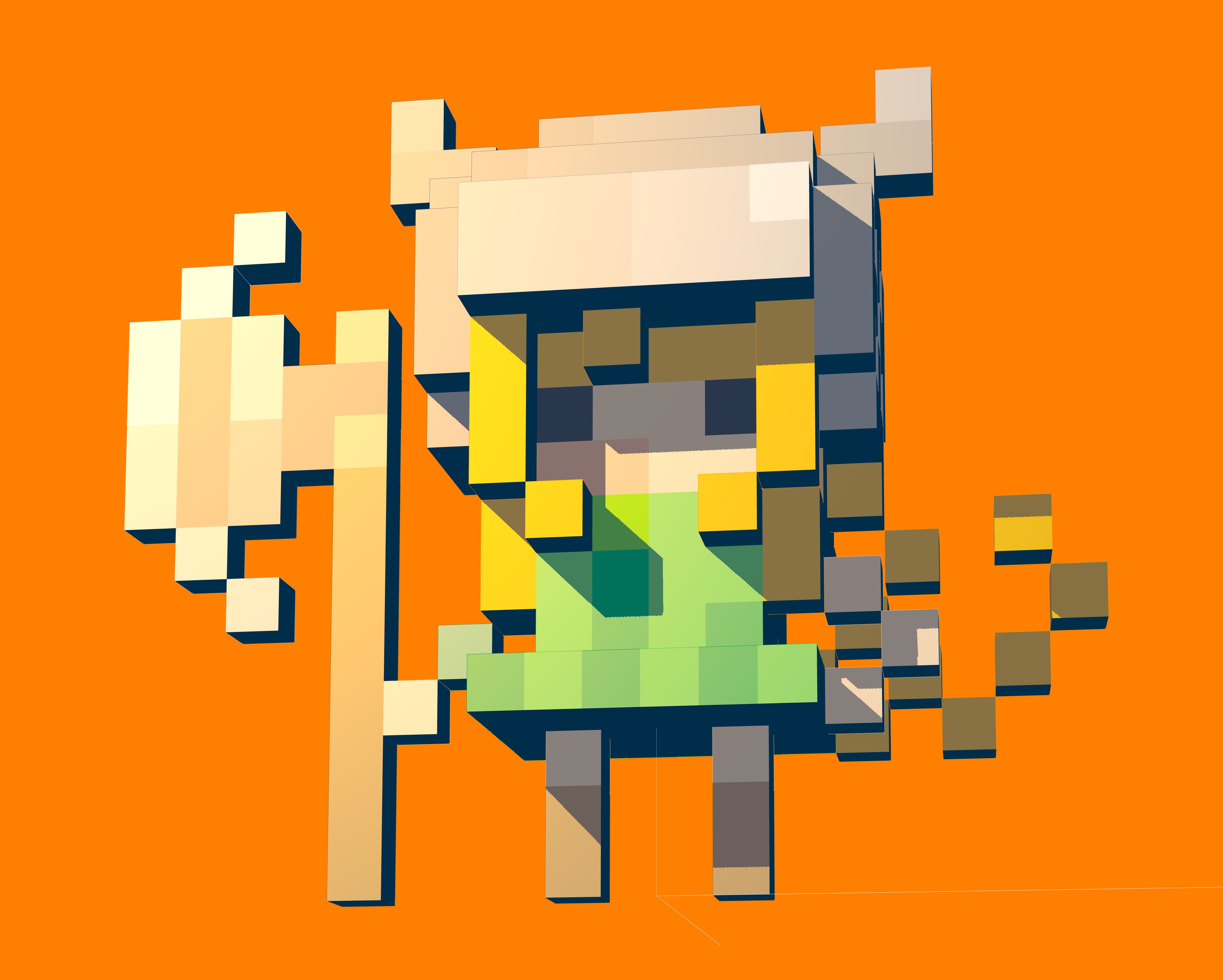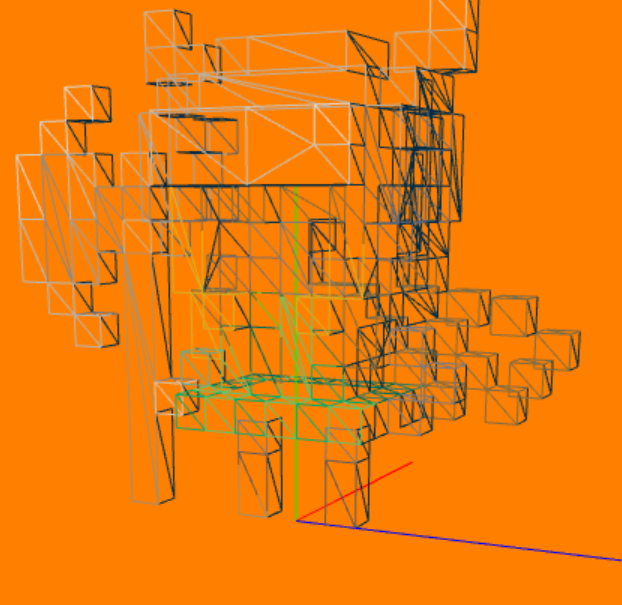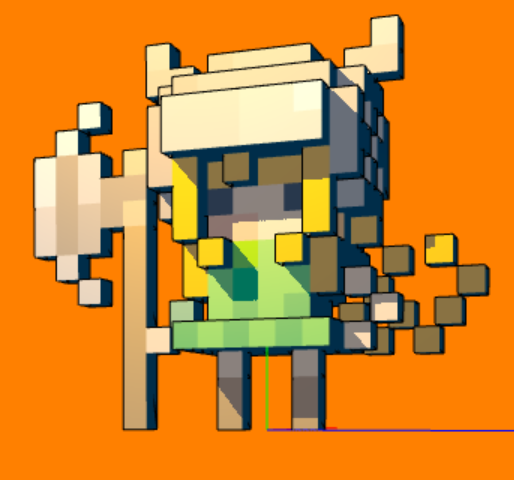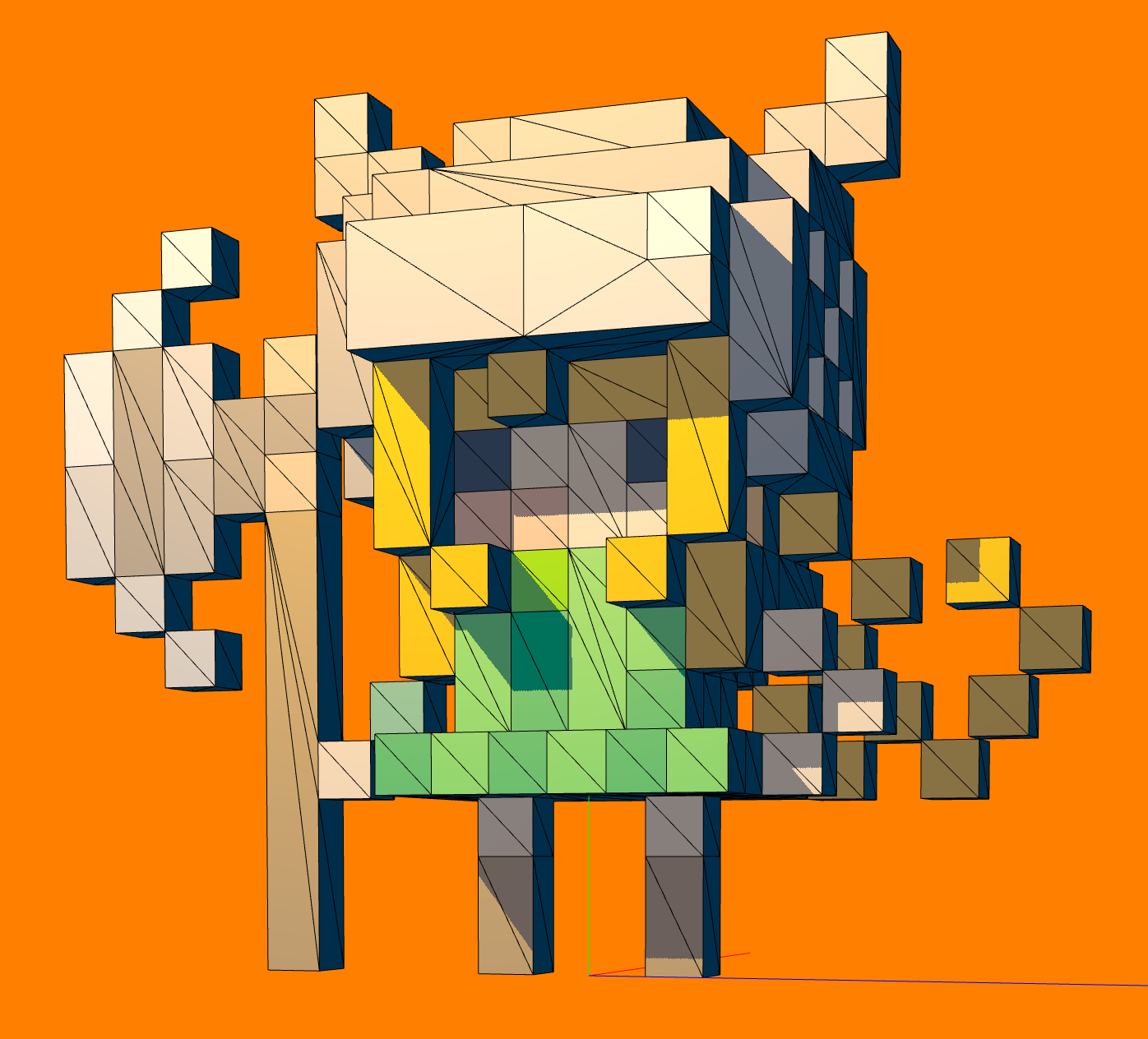I see the mesh is already reduced. Some edge flips to maximize angles would still improve it, but i doubt it's worth the work.
The contour lines probably don't look good if you render the character smaller like in the game, because you get too much of them, causing just flicker and exaggeration of the voxel quantization.
You could try to render the contours in the same color as the voxel, just a bit darker. This should look better in general, and also allows to highlight important objects by using black only for those.
However, the issues remain. If you have a bush, it will cause noise of many lines and a darker appearance, while a simple box would cause only a few lines and no darkening. (We have similar issues by using AO with realistic gfx too.)
A solution would be to make contour lines only per object, not per voxel. Guess this could be done using the stencil buffer for object IDs, but never did anything like that.
The idea to combine cel shading contours with voxels surely isn't overused. So you could get some unique artstyle out of it.
SSAO would look good too i guess, although voxels make the artifacts even easier to see than realistic gfx. So i would use it only a little bit, just so much it's visible.
For shading i would experiment with modeling brightness from shifting hue. Artists do this all the time, but in games lighting it's never done. Not sure why.
The problem i want to solve is easiest to see on yellow voxels. Yellow is a nice color, but in shadow it gets some ugly, dirty brown. This happens because we mix it with black.
But we can do better: To make yellow darker, we can rotate it's hue either towards red or green (we can measure the direction from the initial color).
This works with every color, and we get more saturated results.
I never tried to formulate some math to calculate this, but it should be easy to figure out. Once it works, shadows and AO should look much better than usual (if some cutesy artstyle is the goal ofc.)










